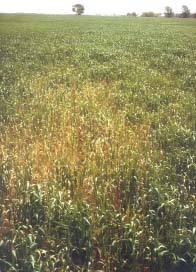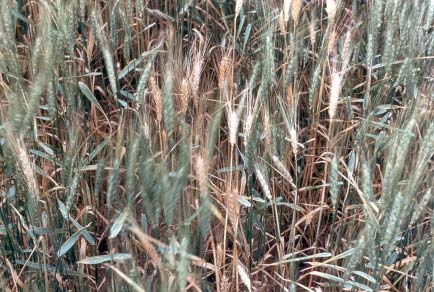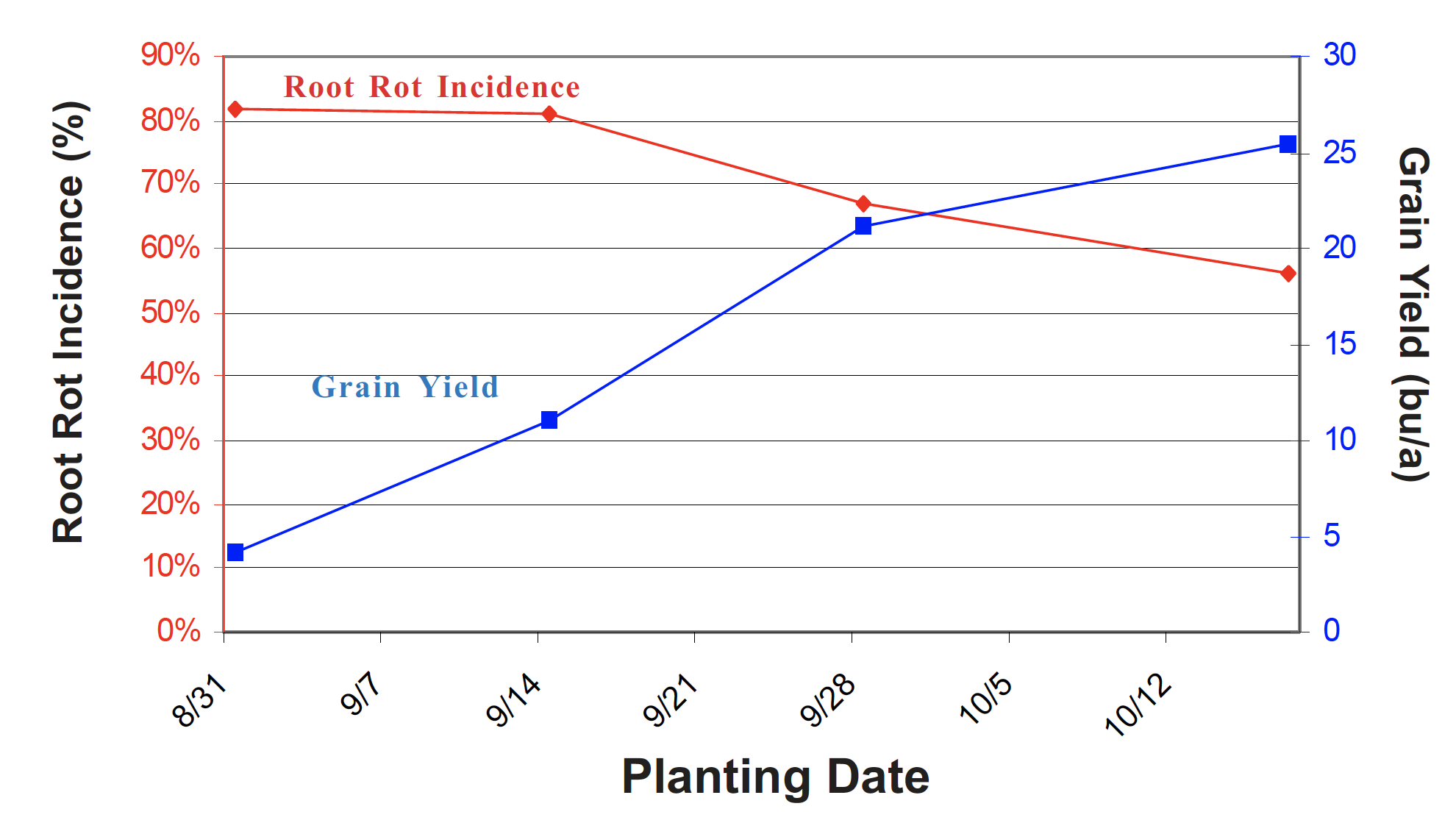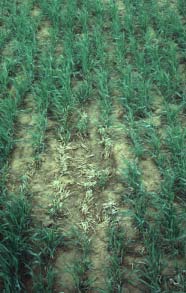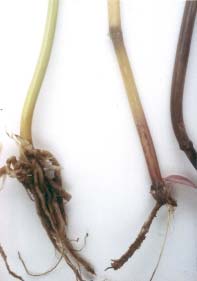Root Rots on Wheat
Wheat root rots are caused by several different fungi that invade and colonize the
roots
and crown tissue of wheat seedlings and plants. In affected plants, the crown and
root tissues have been destroyed and water and nutrient uptake has ceased. This is
more apparent in years when high temperatures and drought occur around heading.
Diseased plants prematurely appear as white headed areas long before expected normal times for maturation.
An early indication of root rot infection is the observation of patches of light green or yellow plants during the spring.
As the season progresses and wheat is exposed to drought and temperature stress, plants infected with root rot produce white heads that are either sterile or filled with shriveled grain.
Effect of Planting Date on Root Rot Incidence and Grain Yield
Key Points
- Early planting of wheat (generally meaning before October 1 in northern Oklahoma and before October 15 in southern Oklahoma) favors a higher incidence of root rot and lower grain yields. This occurs because the early planting date provides a longer time for the root rot fungi to invade and colonize root and crown tissue.
- A late planting date decreases the incidence of root rots because the root rot fungi have less time to invade and colonize root tissue.
Fungi that cause wheat root rots infect many host plants and can survive on any plant
residue in the soil. Hence, residue destruction helps control wheat root rots, but
does not offer absolute control. Take-all of wheat, which is also a root rot, survives
over the summer only on infected wheat residue. Hence, any practice that effectively
eliminates infected residue also controls take-all. For more details on take-all,
please refer to the informational sheet titled, “Take-all of Wheat.”
Wheat Root Rots
Pythium Root Rot
Characterized by patches of dead wheat seedlings that die either before or shortly after emergence.
Common Root Rot
Characterized by discoloration of the sub-crown internode (two seedlings on the right), which is the tissue that connects the seed and seedling roots to the wheat seedling.
Sharp Eyespot
Also called Rhizoctonia root rot - Characterized by eyespotshaped lesions at the base of the tillers (stems).
Dryland Root Rot
Also called Fusarium root rot - Characterized by brownish discoloration of the roots and reddish-purple discoloration of sheaths.
Root Rot Management
Plant wheat late. Shortens the time root rot pathogens have to invade and colonize host plants.
Destroy residue. Helps reduce inoculum level of root rot pathogens; is most effective with take-all.
Maintain soil pH between 5.0-6.0. Mostly helpful in controlling take-all.
Rotate crops. Since root rot fungi survive on any residue, crop rotation has a minimal effect;
again, most effective with controlling take-all.
Seed treatments. Although seed treatments provide excellent control of loose smut and common bunt,
their value in controlling root rots is less clear. Seed treatments generally facilitate
emergence and stand establishment; however, no compound controls all of the root rots.

